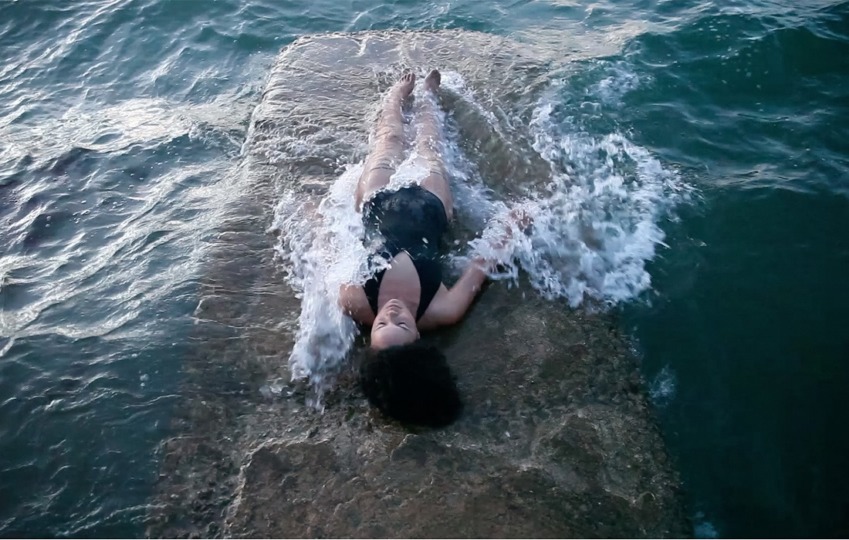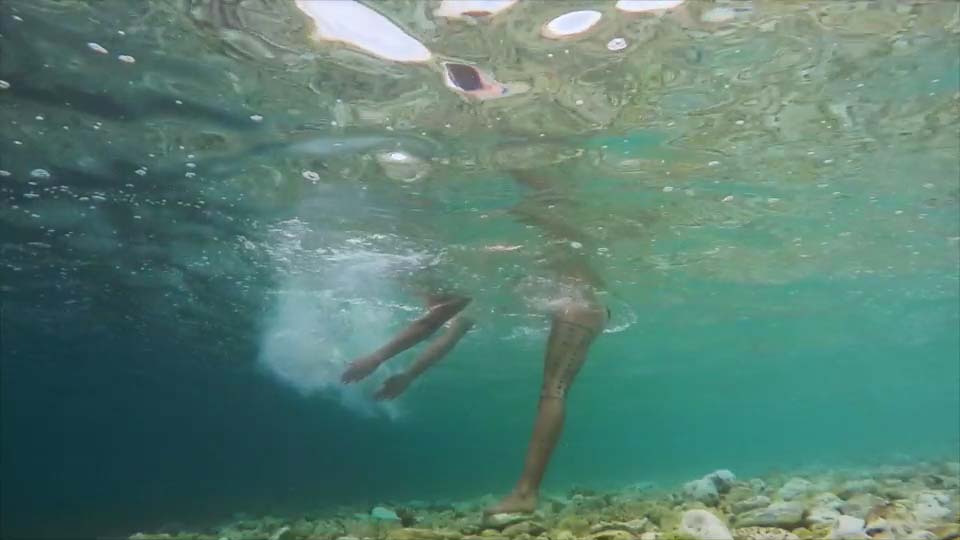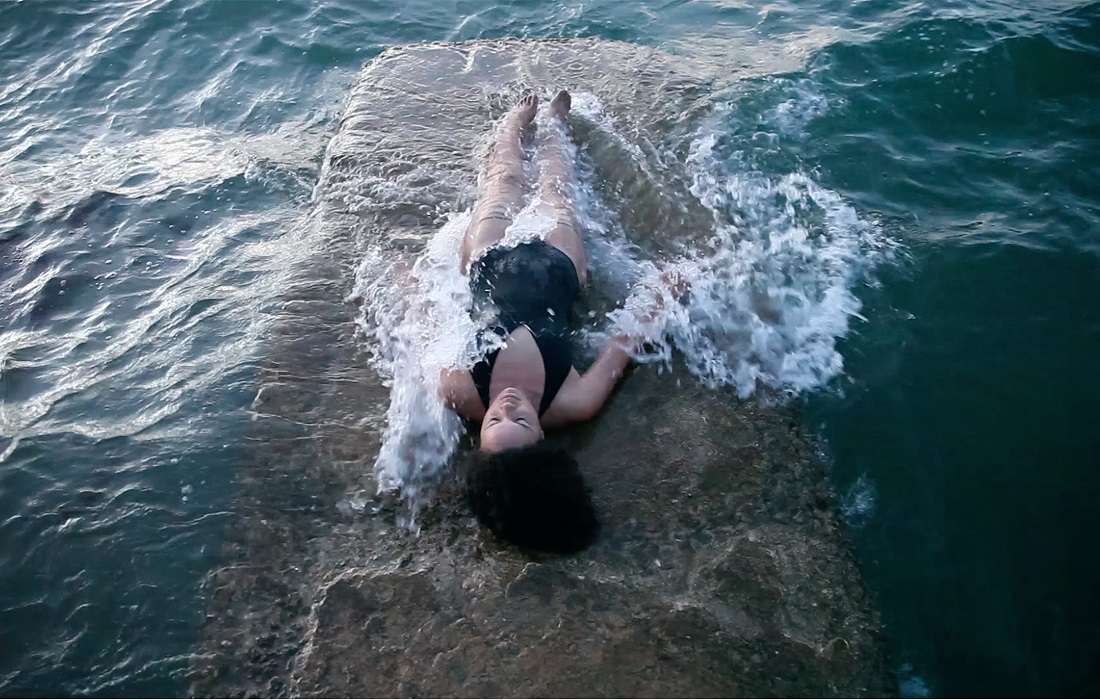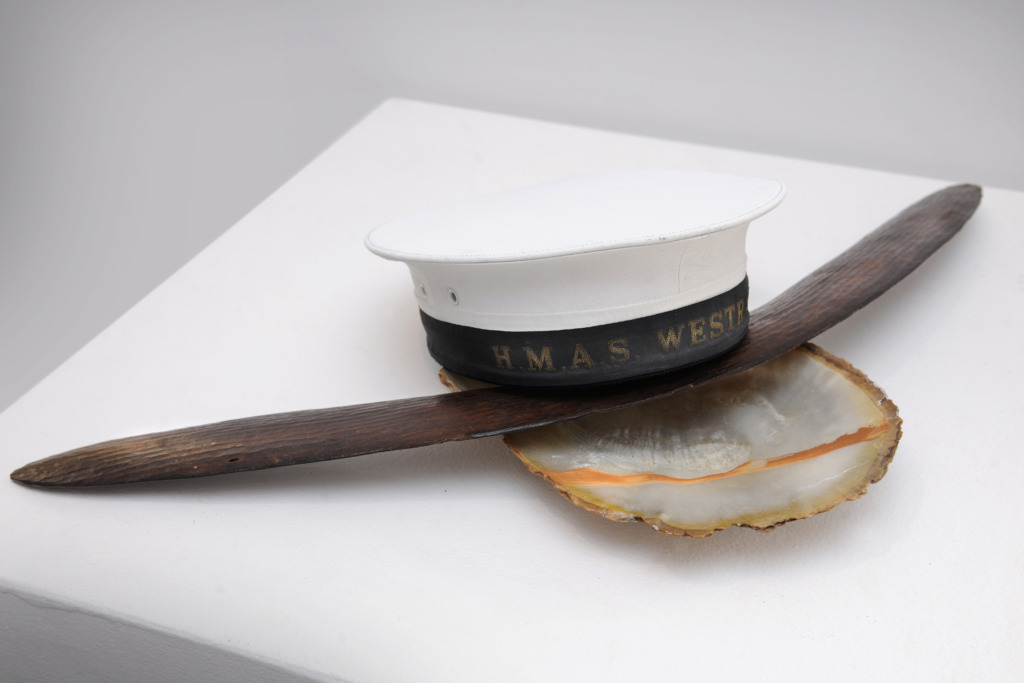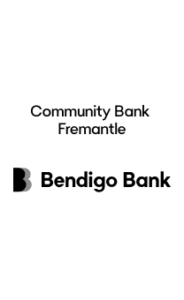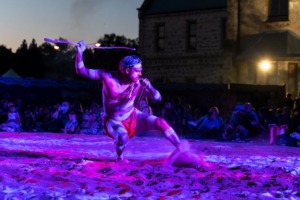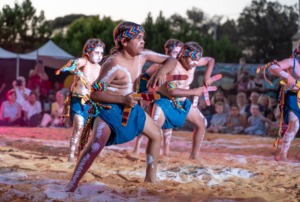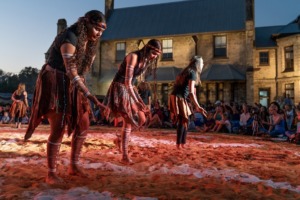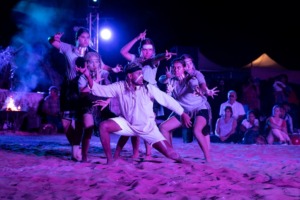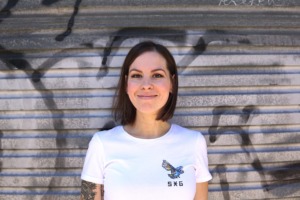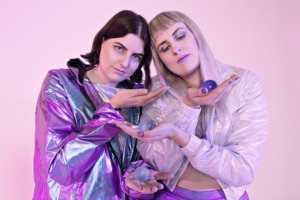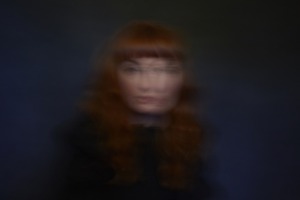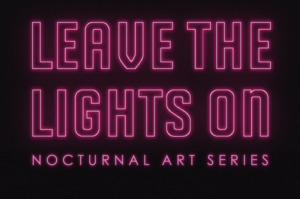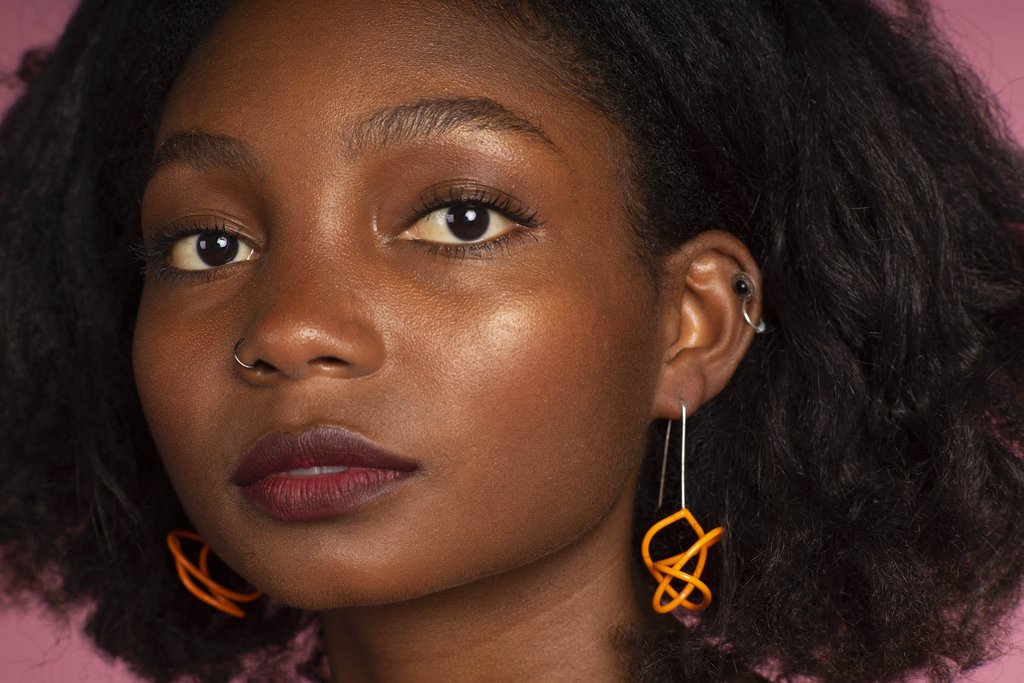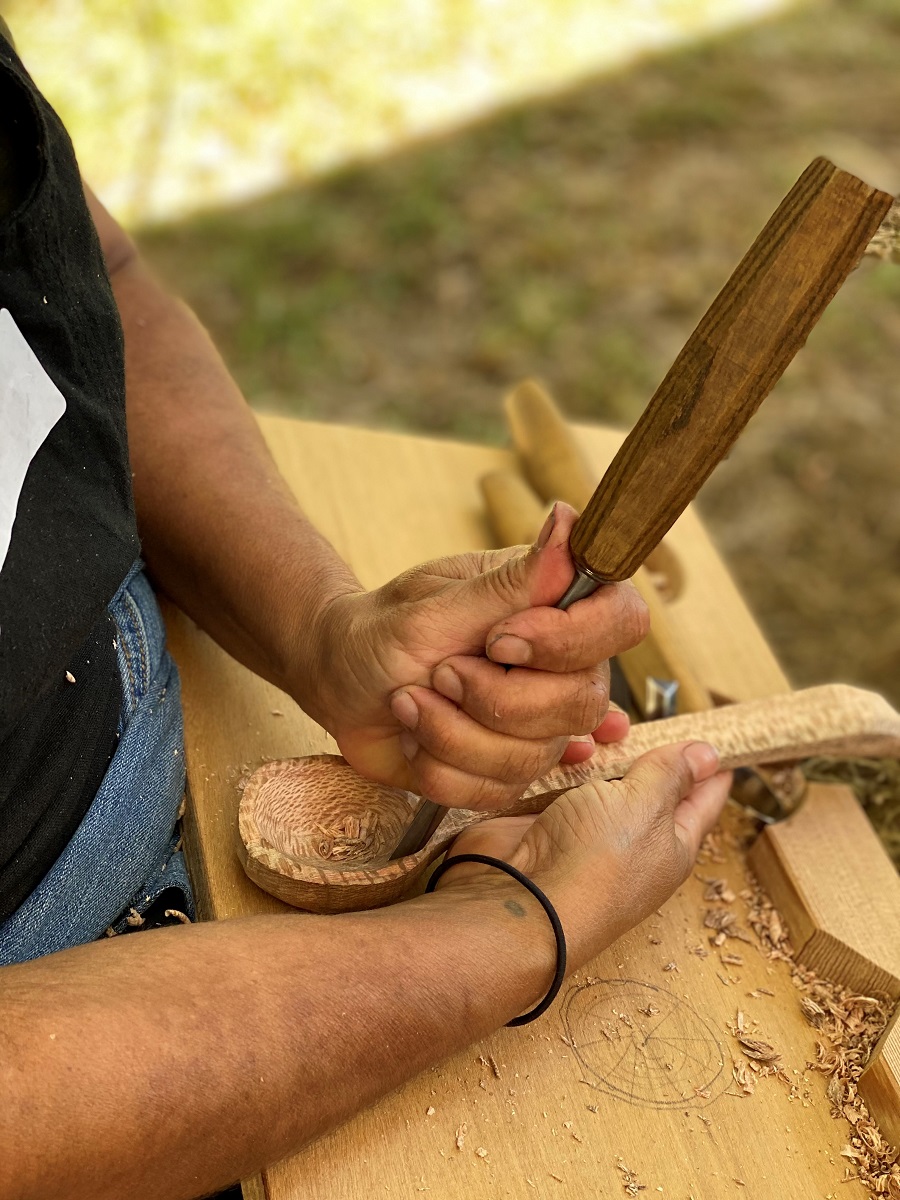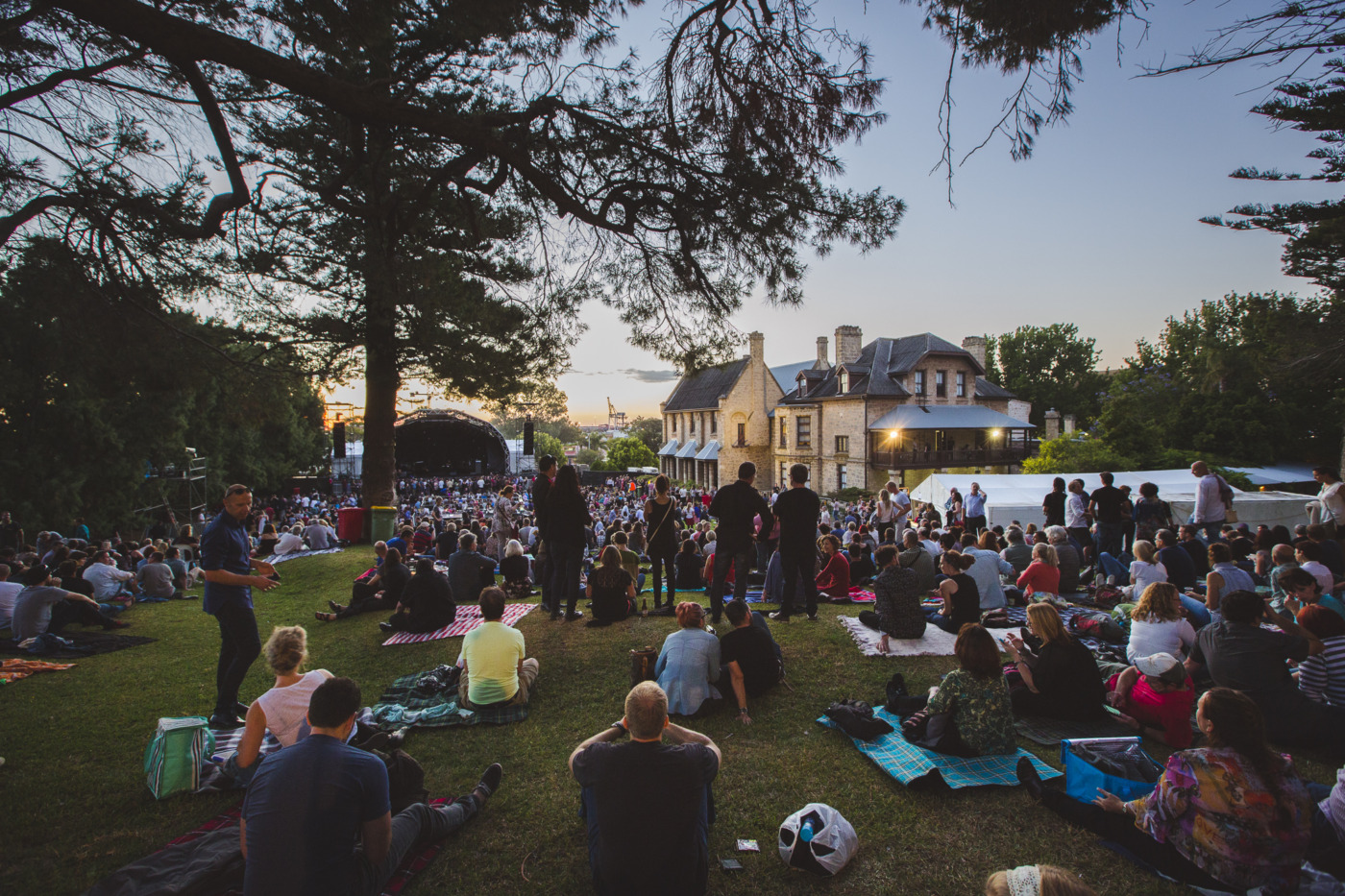About the Artist
Angela Tiatia (Samoan/Australian, NSW) is an artist who works across performance, video and photography. Her practice is inflected by her Samoan heritage, and explores themes including gender, climate and colonialism.
In much of her work, Tiatia has used her own body as the subject, creating endurance performances that articulate the dynamics of power on both a personal and macro scale.
More recently, Tiatia has produced multi-channel videos in a documentary register exploring environmental change and its economic effects in the Pacific, as well as highly choreographed group performances engaged with the tropes of popular culture.
Follow Angela on Instagram @angelatiatia
Works for sale
Angela’s Undertow work is available to purchase. Visit our sales page for details.
CURATOR’S REFLECTIONS: ANGELA TIATIA
‘We should not be defined by the smallness of our islands but in the greatness of our oceans. We are the sea; we are the ocean. Oceania is us.’
Prof. ‘Epeli Hau’ofa, Pacific writer and anthropologist (1939-2009)
Aotearoa-born, Sāmoan/Australian artist Angela Tiatia makes works that speak to Pacific identity, the impact of colonialism and the realities of the climate emergency in a global context. Tiatia shifts between performance, installation, and lens-based practice, often employing her body as both subject and medium in place-based endurance performance works.
Tiatia works grapple with race, power and gender and make nuanced critique on history’s influence on contemporary reality. Her works, particularly those which shed light on her own Sāmoan traditions and customs seek to question what is true of Sāmoa, and that which has been acculturated from western ideology throughout the colonial adventure.
Holding On, 2015, a documented performance work exhibited in Undertow, seeks to understand the reality of the climate emergency and sea level rise in the Pacific, the body of water that Tiatia’s own ancestral island home of Sāmoa is situated within. In the creation of this body of work, Tiatia travelled to Tuvalu, a small island nation in the Pacific which sits just metres about sea level.
In this performance, which took place at Funafuti, the main atoll of Tuvalu we bear witness to Tiatia laid upon a concrete slab, her body positioned purposefully in reverse cruciform, water lapping against her as the tide rises at the setting of the sun. The body positioning within the frame of the camera is purposeful, a comment on the faith and hope that so many place in a Christian God, to save their island homes, while science and the ever-rising waterline affirm another, more pressing and imminent reality.
Holding On, 2015, poetically and quietly unpacks the intimate relationship between people and place, between body of person and body of water, between the threat and the threatened. Tiatia weaves these elements which are often considered as separate or opposing, back together physically and emotionally. She does so in a way that signals the deep affection island communities have for the ocean-spaces that envelop their homes, reminding us of the inherent entwinedness these spaces have in the very fabric of identity and belonging.
Glenn Iseger-Pilkington
CALL & RESPONSE: ‘ANGELA TIATIA’ BY MADISON HOBBS AND JAIMEY HAMILTON FARIS
The following text was originally published online for the exhibition ‘Inundation: Art and Climate Change in the Pacific’, which was presented at The Art Gallery, University Of Hawai’i At Mānoa (Honolulu, Hawai’i, USA) in February, 2020.
Angela Tiatia is a New Zealand-born artist of Samoan and Australian heritage who explores contemporary culture, drawing attention to the intersection of representation, gender, race, and neo-colonialism. Tiatia’s recent work has been included in After the Fall, National Museum of Singapore (2017/2018); Personal Structures, 57th Venice Biennial (2017); APT 8, Queensland Art Gallery in Brisbane, Australia (2016); and Tūrangawaewae: Art and New Zealand, Toi Art, Gallery of the Museum of New Zealand Te Papa Tongarewa, Wellington, New Zealand (2018).
Lick, 2015
Single-channel high-definition video 16:9, color, sound
6:33 minutes
Courtesy of the artist and Sullivan+Strumpf, Sydney | Singapore
Holding On, 2015
Single-channel high-definition video 16:9, color, sound
12:12 minutes
Courtesy of the artist and Sullivan+Strumpf, Sydney | Singapore
In these two performance videos, Lick and Holding On, Angela Tiatia collaborates with the rising tides of Tuvalu to invoke the power of the ocean and the presence of her Pacific female body. The performances came out of Tiatia’s growing concern about her coastal family home in Sāmoa. After eight years away, she witnessed a dramatic change in the land and sea. During that time the green grass, taro, hibiscus shrubs, abundant breadfruit, mango, guava, and frangipani trees had all disappeared. They had given way to a thick brown sludge coming up to her ankles. This experience led her to research climate change and to visit Tuvalu, a Pacific Island nation with strong historical, political, and economic connections to Sāmoa. The nine islands and atolls that comprise the nation each stand at an average of four and a half meters above sea level.
As Tiatia put it in a recent talk given for the Oceania Rising program at the Australia Museum in March 2018, she wanted to show climate change “not on a global scale but on an intimate one—to glimpse how life is lived in an environment where climate impacts are part of the everyday, rather than dramatic one-off events.” Holding On documents Tiatia at rest on top of a concrete slab as the ocean tide subtly rises and the sun sets. At first, the waves come over the slab periodically and shift her body. Over the course of a few minutes, as the tide rises and more water begins to submerge her legs and arms, it impacts her ability to stay centered on this manmade foundation.
While the performance alludes to Tuvalu’s extreme vulnerability to climate change, with warming, rising seas and eroding coasts, it also takes a much more personal and process-oriented approach than most climate change films featuring Tuvalu. As Tiatia recounts, before her visit she had watched many documentaries, including the well-known The Disappearing of Tuvalu: Trouble In Paradise, 2004, in which the situation is so intensely mediated by tropes of threat and disappearance that she needed to see the situation for herself, and hear people’s stories directly.
Arriving on the main atoll of Funafuti as a Samoan sister, and with the support of Australian Museum, Blacktown Arts Centre, and Casula Powerhouse Arts Centre, Tiatia committed herself to a different kind of filmmaking that would reflect and embody the multiple and often conflicting beliefs about climate change held by Tuvaluans. She filmed the daily cycles of life on the islands and, in the process, asked many islanders how they think they need to respond to climate change. She got a variety of answers. Some were most interested in seeking international representation for climate change as a way to reverse carbon emissions. Others were sceptical of international help and more committed to a view that God would intervene. Reflecting on this conversation, Tiatia decided she needed to do a performance in which she could come to terms with these viewpoints, which in both cases seemed to put Tuvaluan lives in another’s hands, and in a position of sacrifice. Seeking an alternative way to feel and experience that position of embodied connection with the water, she lay on the concrete slab, her arms outstretched to both sides and legs placed together. In this cruciform position she then let the water wash over her. As the tide comes in and a crab comes to greet her, she is simply swayed by its rhythm, at times beginning to hold her head over the oncoming water, but still calm and focused.
Lick delves more into the process of collaboration between the body and the ocean waves. This video, played in slow motion and filmed underwater, begins with Tiatia trying to stand on top of a particular rock on the ocean floor with her arms stretched out in front of her and her head above the water. From below, viewers concentrate on the way she uses her legs and arms to keep balance as each gentle wave rolls past and “licks” her. The waves are not strong enough to wipe her out but instead seem to caress her. At moments, she sweeps her arms around and bends her knees to steady herself, bringing her body back into position. The water glistens with the abundance of light from the sun, and is clear enough to see the details in the ocean floor, fish, and Tiatia’s body. As the video comes to an end, Tiatia lets go of the ocean floor and allows the oncoming wave to pick her up and carry her out of the frame of the camera. Even more than in Holding On, viewers experience waves as supportive and buoyant, and the body as active and full of breath.
As in much of her work, Tiatia aims to show the rhythmic connections of body, identity, and place. Tiatia grew up between New Zealand, Australia and Sāmoa. Experiencing the urban settings of New Zealand and Australia as a Pacific Islander brought into focus the history of colonialism, and its exotification and commodification of Pacific female bodies (Eshraghi). Before becoming an artist Tiatia worked as a model. Her understanding of how the global fashion industry, and the commodity industry in general, employs race and gender stereotypes has called her attention to the biopolitics of power in contemporary representations of Pacific Islanders. This has instilled in her work a desire to confront these depictions with empowered decolonizing images, oftentimes using her own body to exaggerate or denaturalize common performative gestures. In her ongoing Inventory of Gestures, she confronts tropes of commodified poses with her own awkward yet powerful poses. In Reflexivity (2013), she connects the history of displaying Pacific Islanders in human zoos with ongoing commodifying attitudes towards her body.
With the Tuvalu video series, she overlays this history with the consideration of how contemporary environmental representations of “drowning” Pacific Islanders on disappearing islands might also feed into histories of colonizing representation (Farbokto and Lazrus). She counters this sentiment with poses that explore strength and control over her own body in relation to, and in communion with, the elements. Especially in Lick, Tiatia stands and floats with power and certainty. Because the camera is positioned beneath the water, the viewer concentrates on Tiatia’s legs in particular, and on her malu, a tattoo specific to Samoan women. In Tiatia’s view, the value in wearing the malu, and having it play such a central part in celebrating her role in protecting relationships between family, community and environment. If the malu is a reminder to her of her responsibility, it is a reminder to viewers of the power and presence of Pacific Islanders in confronting the issues at hand.
As viewers watch Tiatia’s choreography with the waves, there is a powerful understanding that the ocean does not really pose a threat to her survival. Instead, her concentrated engagement expresses a willingness to experience, understand, and work with the elements and environment. If tidal changes are inevitable, how can the body re-compose gestures and rituals learned from actually inhabiting ocean waters?
Madison Hobbs and Jaimey Hamilton Faris, 2020
Farbotko, Carol, and Heather Lazrus. “The First Climate Refugees? Contesting Global Narratives of Climate Change in Tuvalu.” Global Environmental Change, Pergamon, 24 Dec. 2011.
Fekadu, Sarah et al. “The Sea Is Rising: Visualizing Climate Change in the Pacific Islands.” Meteorologies of Modernity Weather and Climate Discourses in the Anthropocene. Narr Francke Attempto, 2017.
“Niu Pawa: What Climate Activism Looks like in the Pacific.” Pasifika Rising, Sept. 19 ,2019, www.pasifikarising.org/niu-pawa-what-climate-activism-looks-like-in-the-pacific/.
Peters, Joakim, and James Skouge. Coconut Ratz and Kung Fu Cowboys: Tales of a Pacific Islander’s Childhood Book. 2018.
Tiatia, Angela. Speech for Oceania Rising program at the Australia Museum in March 2018. Unpublished.
Eshraghi, Léuli, in conversation with Angela Tiatia and Jasime Te Hira. “Bodies that Matter.” Heather Igloliorte, Julie Nagam, Carla Taunto, eds., PUBLIC 54 Indigenous Art: New Media and the Digital. York University, 2017.
Kabutaulaka, Tarcisius and Katerina Teaiwa.Climate, Coal, Kinship and Security in Asia-Pacific Relations. In Australian Institute of International Affairs. 2019 http://www.internationalaffairs.org.au/australianoutlook/climate-coal-kinship-and-security-in-australia-pacific-relations/
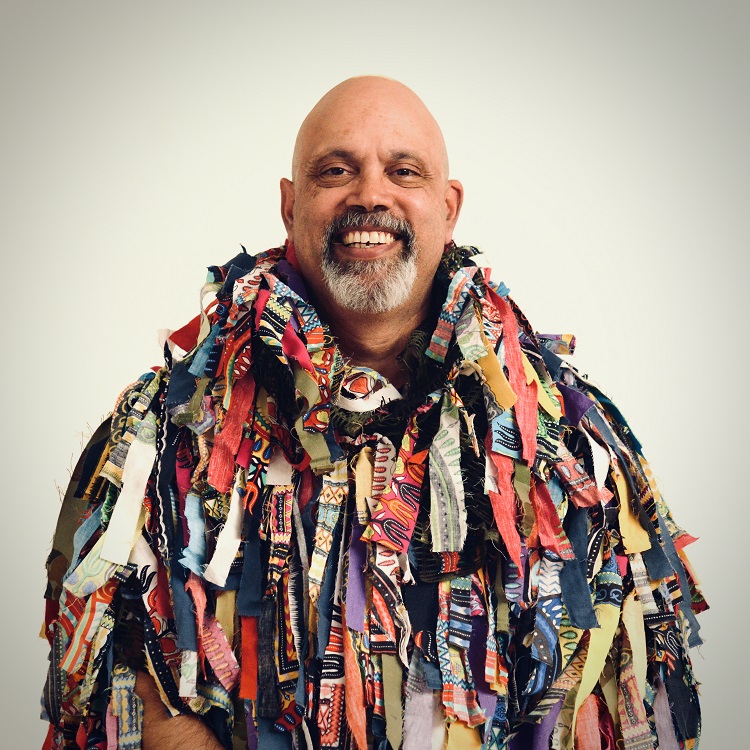
Ron Bradfield wearing his artwork In Plain Sight, 2019. Photography by Sue-Lyn Aldrian-Moyle
About the artist
Bard Peoples, Western Australia
Born 1968, Northampton, Nhanda Country, Western Australia
Lives and works Walyalup | Fremantle, Whadjuk Boodja, Western Australia
![]() @ronbjnr
@ronbjnr
Ron Bradfield is a saltwater man from Bard Country in Broome who grew up in Geraldton. He now calls Whadjuk Boodjar (Perth) his home. As the CYO (Chief Yarning Officer) of Yarns R Us; Ron facilitates cultural conversations across all levels of our communities, helping Australians explore their own personal stories and connection to place.
Ron is also a storyteller and artist, having worked in and around the arts across regional and metropolitan WA for 15 years, often supporting the development of artists to strengthen their creative practices.
Works for sale
A selection of Ron’s Undertow works are available to purchase. Visit our sales page for details.
CURATOR’S REFLECTIONS: RON BRADFIELD
Ron Bradfield is a storyteller and for many years telling stories and spinning yarns has been his primary artistic medium, weaving words and conversations with generosity, humour, charm, and wit to share stories of his life and those of his loved ones. He does this in a way that opens the hearts, minds, and mouths of those in his company – creating space for everyone to listen and to share, but most importantly he holds space for people to feel – to feel joy or sadness and to feel safe in revealing their own stories.
In recent years Ron has explored new modalities of storytelling, working as a visual artist, and creating works which chronicle his own life experiences. This is familiar territory for Ron, having worked alongside artists for many years supporting them to share their unique understandings of the world. For Ron, however, the making process is one of much consideration and reflection and can sometimes be a space of unease as he continues to navigate two worlds, often at odds with each other. Like so many First Nations people, Ron exists in two versions of Australia, Indigenous and non-Indigenous, and manoeuvres both simultaneously every day of his life.
Born in Northampton in 1968, Ron was raised in Geraldton, at a challenging time for First Nations people in Australia. This was a time of social and cultural change and while Indigenous Australians were being afforded more rights in society, these changes to policy and national attitude did not result in meaningful change in Ron’s life in the 1970 and 80s.
I took part in a schooling through the 70’s and 80’s that reinforced the continued separation of our peoples in this society. It may not have always done so physically (and in my early years it did) but it continued to do so in such a way, that there was absolutely no doubt in any Aboriginal child’s mind about how much they were worth, to an Australian society.
After leaving school in 1985 and after the crushing realisation that to live in Australia he would need to be someone else, someone palatable and not an Aboriginal man, Ron joined the Royal Australian Navy. For Ron as a Bard man, a saltwater man from the Dampier Peninsula of the west Kimberley, he felt that in donning a revered naval uniform he could be accepted in society, he could be ‘one of its Australian men’. In some ways Ron made a temporary exchange of one saltwater identity for another. As a crewmember of the HMAS Westralia, Ron belonged to a family of men and women from all walks of life, a community that endured hardships and pain together. One incredibly challenging event was an engine room fire on board in 1998, a year after Ron had left the navy. This fire resulted in the loss of four lives and the emotional and physical injury of many crew members. Watching on from a distance, Ron felt despair and helplessness for his shipmates.
HMAS Westralia is where I finally became an acceptable example of this society’s ‘man’. This happened completely at the cost of me becoming my own man. It’s where I went through our collective Westralia family’s saltwater law/lore and in doing so, I’d found myself a new tribe and a new place to be and to belong. This is where I developed life-long bonds with those who kept me safe and alive at sea. This is where we lived our saltwater lives in each other’s smell. As a result, this is where some of my deepest and rawest scars were made.
It has been 25 years since Ron wore the tally band of the HMAS Westralia, but the experiences, good and bad have left him permanently changed. For Ron, these experiences were formative, they allowed him to belong to a community, to have purpose and to connect with saltwater country, albeit through the lens of service. There was, however, a point in time when Ron had to reconnect with family, community and Country, a process that continues to this day.
The ambitious works exhibited in Undertow, including the newly commissioned work A Ship’s Crew (2022) are a record, a kind of manifesto, bringing together and reconciling Ron’s life to date. The works honour those two saltwater families and saltwater stories, paying tribute to ancestors and comrades whose struggles and triumphs have inscribed themselves into his own story, into his being. The works comprising this installation are reverential, honouring symbols and icons from his saltwater worlds with mindful and respectful consideration. Functioning as artwork and personal museum, the works sit in a state of poetic balance rather than competing with each other, a reflection of Ron’s personal sense of resolve, looking back to his past.
‘It feels like that ship’s number is branded on my Liyan (my centre of self) permanently a part of my make-up and constantly reminding me of how I came to become a ‘man’ in this ‘Australian’ society’
Glenn Iseger-Pilkington, 2022
CALL & RESPONSE: ‘BARDI MAN’, BY CASS LYNCH
The following text was commissioned for Undertow, as a response to the narratives, themes, and ideas in Ron Bradfield’s recent works. Cass Lynch is a Nyoongar writer and researcher whose works explore deep time, climate change and ancestral knowledge. Find out more about Cass by visiting her website.
Off the coast of Noongar Country, a ship of iron moves in dark waters. It travels north, past the islands that were once hills in wide plains, long ago in the Cold Times. It passes the southern plains where tall white dunes roll down to clear seas, and limestone fingers reach up through sand, glowing in the moonlight. Further north, it moves beyond the bent trees of Geraldton, and passes Kalbarri where coastal sandstone meets the deep Murchison gorges, bands of red and orange, cut by the little blue river winding far below. The ship moves past the sandy spits of Shark Bay, where stingrays sleep amongst the shipwrecks on the ocean floor. It skirts the Norwest Cape, passing wide of the blue waters of Nyingulu; home to turtles, octopus, dolphins and rays. Continuing north, the iron in the ship’s hull sings softly as it passes the great iron heart of the Pilbara, and that ancient shield of ferrous rock rumbles tunelessly in return.
North of the ship, where the air is thicker and the coastline is hugged by mangroves and wattle thickets, the oysters of Bardi Country notice the iron visitor approaching. Here these flat discs of south sea oysters live in clutches on the sea floor, hints of moonlight pearlescence lining their shells as they take deep breaths of water. All the sea moves through oysters at one time or another, and they know the ship of iron is there, the metallic tang in the aqueous medium, that song of salt and alloy metal, with traces of diesel fuel in its wake.
The ship passes by Broome in the south, then Beagle Bay, then Lombadina, travelling up the Dampier Peninsula.
The oysters are not the only kin that have noticed the iron ship approaching. All of Bardi Country has stopped to watch the ship enter their waters. The bats in the mangroves glance toward it, the moths have paused from making spirals in the moonlight, the tree frogs are silent, listening. The shore birds lift their necks from nests, the dugongs line up in the shallows, facing west.
Shhhhhhrrrrrrssssh, frrrrsh. The ship is here.
The wind goes to investigate. It travels across waters which were dry land before the seas rose, not long ago. The sea can swallow people, homes, and histories, but it can also throw things up on the shore. Nothing is ever truly lost.
The wind arrives at the ship and discovers that it’s hatches and windows are all closed for the night. It circles around the bridge, looking in at the human faces lit with the red light emanating from the lamps and monitors. It finds a window ajar on the bridge wing and moves in and around the people staring out into the darkness. One person absent-mindedly flicks red dust off a keyboard; another shoos a moth away. The wind moves through the ship, searching, thinking, moving things around. Shaking a cup with a dried teabag stuck inside. Rattling a brass dog tag hanging from a lamp. Lifting a sock from a bag of dirty laundry.
The wind leaves a layer of material as it searches through the hallways, engine rooms and cabins. A sea eagle feather on a fuel drum. Charcoal in the handbasins. Seaweed pearls and barnacle shells amongst discarded food wrappers.
There’s something familiar here, but the wind can’t quite find it. The iron of the ship is singing a mournful song, but under that, the wind can hear the diesel fuel whispering too, singing softly of a time long ago when dinosaur bodies and decomposing ferns were pushed deep into the earth and became oil.
Pearl shell.
There is pearl light here somewhere. The wind rotates and moves towards the sleeping bodies in the bunks of the berth. Over, around, up, and across, the wind searches the beings lying flat in sleeping bags. A sleepy sigh. A shimmer in the gloom.
Pearl light.
There he is, the one who has been pulling the gaze of saltwater Country, craning the necks of bird, mammal, insect, fish and reptile. A man of this place, this Country. Gleaming with pearl light.
What are you doing out here, Bardi Man?
He is sleeping, and clothed in an unusual garb, dressed in the shades of someone else’s sea, his limbs swimming in a foreign dyed ocean. The wind looks him all over, dropping more pieces of Bardi Country as it does. Bee wrapped in spider web. Sea turtle eggshell. The bones of a fish. Ochre powder. This scatter settles into the stitching of his uniform, and the button indents, and the folds of the pants.
The wind wants to lift him away, but he won’t budge. The limbs move easily enough, the legs, the feet, the arms, the hands, they all rise under the winds’ pull. It’s the chest that is sunk like a stone into the soft bed. The heart is heavy, and the wind is just the wind, and cannot lift it.
The wind leaves the ship and blows back toward land, bringing with it the smell of diesel, disinfectant, cotton, and gunpowder.
Who has the power to sing this man home?
Four dingoes climb the dunes and stand there, looking across the seas, facing the ship. The wind moves through their fur and they recognise pearl shell amongst the scents.
They howl.
They howl,
they howl,
they howl.
The howls travel across the water in snaking spirals, tendrils of song looping toward the ship. The vibrational coils burst through the windows; enter up through the bilge; roll down through the exhaust stack. The howls rattle all through the iron ribs of the ship, vibrating, pulsating. They find the Bardi Man still asleep under a dusting of Country. The howls enter his clothes, wrap around his limbs. They move across his arms, his legs, his face, his chest, his back. They wrap around him like a layer of skin, pressing him, squeezing him. The howling envelops him in layers of memory, language, medicine and spirit. His skin is hidden under camouflage, but under the cotton, hair, fat and muscle; his femurs, vertebrae, tibia, ribs and fibula gleam like pearl shell. Softly, so softly, his Bardi bones howl back.
The coiling songs withdraw and the dingo vibrations move away through the ship; knocking hats off dressers, tipping tools from buckets, and flinging paper out of pigeonholes. They clatter out through the hatches into the night sky over Sea Country, dissipating under the stars. The ship travels on northward. The dingoes breathe deep on the dunes and settle as a group to sleep. In the shallows the oyster shells sigh and close themselves up, hiding their moonlight inside, for now.
Cass Lynch, 2022
About the Artists
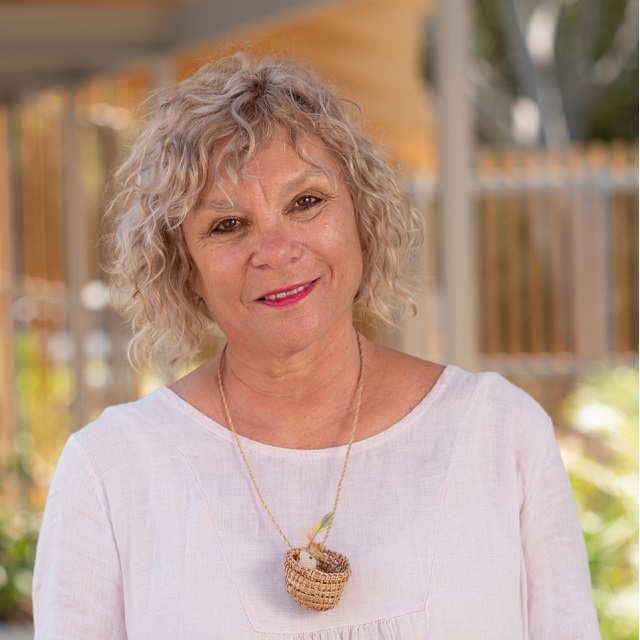
Sonja Carmichael. Photography by Stradbroke Island Photography. Image courtesy Quandamooka Yoolooburrabee Aboriginal Corporation
Sonja Carmichael
Born 1958 Meanjin | Brisbane, Queensland
Ngugi Peoples, Quandamooka Country, Queensland
Sonja Carmichael is a Quandamooka woman from Mulgumpin / Moreton Island and Minjerribah / North Stradbroke Island, Queensland. She works specifically in the medium of fibre basketry and woven sculptures, informed by her family’s cultural connections to Quandamooka Country, exploring a range of techniques and materials, including ‘ghostnets’ and fishing lines – that directly respond to concerns about the preservation of the natural environment. Her work is held in collections such as the Queensland Art Gallery, Museum of Brisbane, National Gallery of Victoria, National Museum of Australia, and the Art Gallery of South Australia.
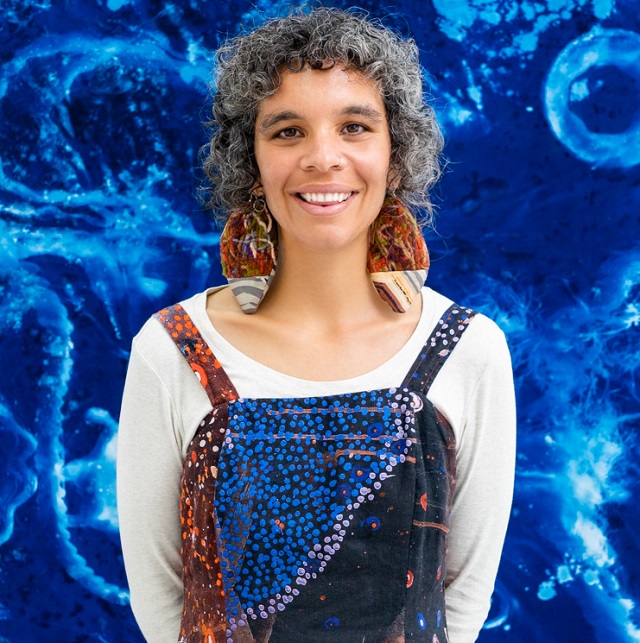
Elisa Jane Carmichael. Photography by Louis Lim. Image courtesy of Onespace Gallery
Elisa Jane Carmichael
Born 1987 Meanjin | Brisbane, Queensland
Ngugi Peoples, Quandamooka Country, Queensland
![]() leeceecarmichael
leeceecarmichael
Quandamooka woman Elisa Jane Carmichael is a multidisciplinary artist who honours her salt-water heritage by incorporating materials collected from Country, embracing traditional techniques, and expressing contemporary adaptations through painting, weaving, and textiles. She comes from a family of artists and curators, and works closely with her female kin to revive, nurture, and preserve cultural knowledge and practice. Elisa is a descendant of the Ngugi people, one of three clans who are the traditional custodians of Quandamooka Country, comprising the waters and lands of Moreton Bay.
Both Sonja and Elisa Jane Carmichael are represented by Onespace, Meanjin | Brisbane, Queensland
Works for sale
A selection of Sonia and Elisa-Jane’s Undertow works are available to purchase. Visit our sales page for details.
CURATOR’S REFLECTIONS: ELISA JANE AND SONJA CARMICHAEL
The ambitious installation work of mother and daughter team, Sonja and Elisa Jane Carmichael, Ngugi artists from Minjerribah (North Stradbroke Island, Queensland) and Mulgumpin (Moreton Island, Queensland) sits at the heart of Undertow, transforming FAC’s main gallery into an underwater chasm, enveloping and submerging visitors within a vessel of ancestral knowledge as if held in the ocean’s watery embrace.
Presenting their most ambitious installation work to date, comprised of six expansive cyanotype works on cotton and a selection of forms woven in the enduring traditions of Quandamooka women, Dabiyil Bajara, 2021, is a celebration of Quandamooka sea Country. The work is a document of care, of holding Country close, of mutual reciprocity between momentary custodians and the Country they care for – it is a work made about and emerging from mothers and daughters, and more broadly it is a story of life and death.
The work is a map, taking us on a journey of Quandamooka Country, above and below waterlines, from one side of Minjerribah to other, from places rich in sea life that have provided for custodians, to places of healing that have been visited by women since the beginning. The title of the work, Dabiyil Bajara translates to ‘water footprints’, a poetic reflection to the marks we make, and leave, if only for fleeting moments, upon and within vessels of water.
Created during the last few weeks of Elisa Jane’s pregnancy and at the time of the passing of Sonja’s sister, Elisa Jane’s Aunty, the work is a meditation on the cycles of life, on ancestral knowledge and on the legacies of First Nations women, who continue to weave knowledge from the past into hopeful futures, with care, courage, and compassion.
CALL & RESPONSE: ‘DABIYIL BAJARA’, BY FREJA CARMICHAEL WITH FAMILY, SONJA CARMICHAEL AND ELISA JANE ‘LEECEE’ CARMICHAEL, 2021
The following text was commissioned for Undertow, as a response to the narratives, themes and ideas in Sonja and Elisa Jane Carmichael’s recent works. Freja Carmichael is Sonja’s daughter, and Elisa Jane’s sister, and is an author, curator and artworker.
This is a selected glossary describing language, places, materials, and elements featured in Sonja Carmichael and Elisa Jane ‘Leecee’ Carmichael’s installation: dabiyil bajara. Rather than an alphabetically ordered list, meanings flow between one another.
Quandamooka
Our Country is beautiful Quandamooka, where the ocean currents meet with Moreton Bay. Quandamooka is sand, land and sea country and includes Minjerribah (North Stradbroke Island), Mulgumpin (Moreton Island) and southern islands and coastal areas adjacent to the Bay. There are three clan groups belonging to Quandamooka: Ngugi, Noonuccal and Goenpul. We are Ngugi people.
Matrilineal
Matrilineal stands for the long line of Ngugi women we descend from. Late mother (to Sonja) and grandmother (to Freja and Leecee), Joan Hendriks inspired us to be strong in our culture and to listen deeply with Country. She often said, “water is the living springs of mother earth.”
Mulgumpin
Mulgumpin is place of sand hills. Our Ancestors lived here prior to onset of colonisation.
Minjerribah
Minjerribah, also Terangeri, is neighbouring sand island to Mulgumpin. Our family home is on Minjerribah and it is where we listen, make, and connect on Country. We gather fibres for weaving; we care for the ocean by collecting the rubbish that washes ashore; and we witness cycles of nature with the changing seasons of flora and land, sky, and marine life.
Goompi
Goompi (Dunwich) is on the bay side of Minjerribah and connects the island to the mainland. The passenger ferries travel between Goompi and Cleveland, weaving their way around smaller islands and across the deep bay waters. The bay is home to plentiful marine life including dugong.
Healing rock
Healing rock, known as Adder Rock on Minjerribah, looks to the ocean and Mulgumpin in the distance. Waves crash around the rock and make pools that become temporal homes to small sea life. Like these ephemeral pools, healing rock has witnessed change in tides and times.
Moongalba
Moongalba (Myora) was a mission established on Minjerribah in late 1800s under the Queensland Aboriginal Protection Association. The missionary activity enforced European values on Quandamooka people and other First Peoples sent to Moongalba, resulting in a controlled life with language and cultural practices forcibly silenced. Traditions such as weaving were interrupted for a period of time, but knowledge was never truly lost.
Ungaire
Ungaire is our special weaving fibre, a reed that grows among the freshwater swamps of Minjerribah. Previous generations used ungaire for weaving gulayi (women’s bag). Over the past decade, Mum (Sonja) has researched historical bags housed in museum collections to regenerate the making techniques of Quandamooka Ancestors.
Talwapin
Talwapin (cotton tree) often grows close to the water’s edge. Past generations used the inner bark of talwapin to create string for making large nets. String-making remains an important practice today, representing a material link between past and present.
Pulan
Pulan (Amity Point) is a place on Minjerribah where the sunsets on the calm waters overlooking the bay. Buwangan (dolphin) often vist the shoreline; their presence evokes memory of place. Previous generations would use their hands, spears and sticks to tap the water’s surface, and call out to buwangan to bring the fish ashore.1 The fish would then be gathered using large nets.
Sea mullet
Sea mullet has sustained people for generations. Mullet’s seasonal migration through Quandamooka sea Country is marked by signs in nature. Past generation learnt that when mirriginpah (sea eagle) was seen flying seaward, this meant it was time to bring fish nets to shoreline and prepare for a big catch.2
Shellfish
Shellfish includes oysters, eugaries and quampies. The abundant varieties of shellfish, alongside mullet and other seafoods have been shared communally across time.
Mulumba
Mulumba (Point Lookout) on Minjerribah is home to rocky headlands and stretches of surf beach that bring in tides of shellfish and other sea gifts of country. On a clear day, turtles, manta rays, sharks, and pods of dolphin are seen swimming through the surf and in the cooler months, Yalingbilla (whale) journeys past the coastline.
Ghost Net
Ghost Net is a plastic fishing net or rope, lost or discarded in deep ocean, that continues to drift on its own, entrapping and killing marine life. This rubbish eventually washes ashore affecting the coastline. Where possible, we collect the marine debris and weave it into forms that represent resilience and cultural connection today.
Cyanotype
Cyanotype is an image making process that creates a deep blueprint through light exposure. In this work, cyanotype is used as a metaphoric expression of the layered meanings and experiences embedded in the sands, lands, waters, and cultural material of Quandamooka. The blue colour of cyanotype echoes the impression of Quandamooka sea country; waters that carry and sustain life and in turn these waters are carried by culture and people.
_________________________________________
1 Christine Peacock, History, life and times of Robert Anderson, Gheebelum, Ngugi, Mulgumpin (South Brisbane, Qld.: Uniikup Productions, 2001), 209.
2 This story of Mirriginpah is told in public artwork by Quandamooka artist Belinda Close, titled Mirriginpah, Cabarita Park, Pulan.
Fremantle Arts Centre’s Sunday Music will feature one of its most diverse and youthful lineups to date across January, February and March, rounding out another magnificent summer of free live music in the Port City.
Running 2-4pm every Sunday until 3 April, Sunday Music features a carefully curated selection of some of the most exciting new talent making waves in the local scene, performing on the hallowed yet laidback stage in FAC’s Front Garden.
“Sunday Music celebrates the amazing array of music being produced, performed and streamed to the world, from right here in Western Australia,” said Fremantle Arts Centre Director Anna Reece.
“Sunday Music is about discovery. We aim to present a program that offers something for everyone. We are proud to present new or emerging acts at their peak sharing their music and stories with a largely new audience, many of whom will go on to be loyal supporters for years to come.”
“Not to mention, it’s the nicest gig in town – it’s relaxed, family friendly and free.”
January-March highlights include a celebration of art-rock on 30 January, when emerging local bands Vacuum Dreamer and Didion’s Bible will flex their energetic post-punk, synth-driven sonic muscles.
Then on Sunday 6 February, Banjo Lucia – daughter of WA music royalty John Butler and Mama Kin – makes her FAC debut alongside Ella Therese. Already a passionate and esteemed songwriter, Banjo Lucia’s songs reveal a wisdom, sophisticated turn of phrase and insight into the human condition that is simultaneously heartbreaking and uplifting. Her appearance at Sunday Music kicks off a busy national touring schedule in what’s tipped to be a breakthrough year for the teenager.
On 13 February award-winning singer-songwriter Emily Barker returns to the Sunday Music stage, having recently moved back to her native WA and armed with a fresh new sound full of expressive vocals and a warm acoustic aesthetic.
Then on Sunday 6 March, Sunday Music gets deadly with Northern Territory bands Salt Lake Band and Garrangali Band. Salt Lake Band is a very cool 10-piece coming from the traditional lands of Groote Elyandt, far north in the Gulf of Carpentaria. Singing in their unique and complex language Anindilyakwa, this band of brothers mostly hail from the small communities of Umbakumba and Angurugu. With big drumbeats, strumming guitar and mesmeric, rapid fire language pronouncements by lead singer Yantarrgna, Salt Lake Band acknowledge sacred homelands, elders passed, stories from yesterday and sacred totems tied to each of their 14 clan groups.
Garrangali Band have been wowing crowds for over 10 years with their infectious grooves and proud, meaningful lyrics about deep creation stories and political issues. Adored for their particular brand of upbeat offbeat riddim, Garrangali Band combine traditional songlines with new saltwater ska and reggae, revealing the strength and passion of living culture in north-east Arnhem Land.
Rounding out March are local rnb/soul five-piece Ken Paolo and the Space Cadets (13 Mar), a homecoming performance for Maatakitj (Clint Bracknell) (20 Mar) featuring specials guests Roma Yibiyung Winmar, Iain Grandage, Nigel Bird and more, and an energetic afternoon with Bossa, Calypso and Sri Lankan Baila-inspired group Eucalipto (27 Mar).
Ending the season with a West Coast favourite, much-loved folk singer-songwriter Michael Dunstan wraps up the 2021-22 Sunday Music program serenely on Sunday 3 April.
JAN-MAR LINEUP
- 9 Jan: Grievous Bodily Calm
- 16 Jan: Anesu
- 23 Jan: Mathas + Project Bexx
- 30 Jan: Vacuum Dreamer + Didion’s Bible
- 6 Feb: Ella Therese + Banjo Lucia
- 13 Feb: Emily Barker
- 20 Feb: Erasers + Tanaya Harper
- 27 Feb NO SHOW – Perth Festival Writers Weekend
- 6 Mar: Salt Lake Band + Garrangali Band (NT)
- 13 Mar: Ken Paolo and the Space Cadets
- 20 Mar: Maatakitj
- 27 Mar: Eucalipto
- 3 Apr: Michael Dunstan
COVID Information
Please note that proof of double vaccination is currently required to attend Sunday Music.
Future COVID restrictions may apply.
Media Enquiries
Please contact Rosamund Brennan
[email protected] / 08 9432 9565
Sunday Music is possible thanks to the ongoing support of Bendigo Bank – Fremantle Community Bank Branch. 2021-22 is the twelfth year of this long-standing partnership.
Immerse yourself in one of the world’s oldest and richest cultures at Wardarnji 2021, a spectacular evening of Nyoongar dance, performance and storytelling returning to Fremantle Arts Centre on Saturday 13 November.
After being postponed in 2020 due to COVID, this much-anticipated event will bring together more than 100 dancers performing traditional songs and dances alongside contemporary original works, magnificent puppetry, fires burning well into the night and an array of markets showcasing the talents of local Aboriginal makers.
Directed by WA Aboriginal Person of the Year Karla Hart, Wardarnji offers a rare opportunity to experience the diversity of dance, song, language and story from 14 different clan groups across the Nyoongar nation – celebrating this ancient and venerable culture.
According to Karla Hart,
“On Nyoongar country we are so empowered by dance and have many pioneers that have blazed a trail for decades – supporting and encouraging us as we go along on our cultural journeys, strengthening and reclaiming what is our birthright and bloodline.”
“Wardarnji is a direct representation of all of that. It is not only for our Indigenous community but for our non-Indigenous family that love to come share with us, who have the same sense of pride and love for culture and dance. It is a beautiful way of coming together, to feel as one, as this is a culture that belongs to the country that we all live on.”
Wardarn is the Nyoongar word for sea and in 2021 will inspire much of what the audience will see and experience including the exquisite puppetry and more organic and immersive staging referencing our coastal sand dunes.
Merging contemporary dance with live puppetry, a highlight of Wardarnji will be the sharing of the Nyoongar story of Waarlitj the Eagle, Chiriger the Grey Wren and how the blue wren got its colours. The puppets will be made with the help of the community via a series of workshops held at Fremantle Arts Centre facilitated by puppeteer Rachel Riggs and Nyoongar artist Nerolie Bynder.
Other highlights include a dynamic contemporary dance piece presented in collaboration with ZAP Circus, the award-winning Western Australian performance company known for blending acrobatics, fire, pyrotechnics and comedy.
Collaborating with Karla Hart on Wardarnji this year is celebrated Nyoongar artist Mark Howett. A multi-Greenroom and Helpmann Award winner, Mark has worked as a lighting, video, set designer, artistic director and production manager, on over five hundred national and international productions.
Joining us as Master of Ceremonies for the evening are Nyoongar community leaders Olman Walley and Thierra Clanton. The director of Boorloo Aboriginal Cultural Experiences, Olman is an acclaimed performer and storyteller. Thierra is an environmental scientist and seasoned MC who is passionate about sharing Nyoongar stories, history and knowledge.
Fremantle Arts Centre Director Anna Reece commented,
“Aboriginal culture is a living, breathing, and edifying force in Walyalup (Fremantle). The Whadjuk people have long danced, sang and passed on their culture here, observing and following the seasons and listening to and respecting country.”
“Wardarnji is a generous sharing of that culture, a nationally significant celebration of the world’s oldest culture and language, and we are honoured to once again produce and present it here at Fremantle Arts Centre.”
We invite you to bring a picnic, browse the market and food stalls showcasing the talents of local Nyoongar makers, artists and small businesses, and immerse yourself in an evening of strong proud Nyoongar culture performed by more than 14 dance groups.
Event Information
This is a free family friendly event, suitable for all ages. We recommend arriving early to secure a spot.
- BYO picnic blankets
- Food and beverages available to purchase, no BYO alcohol
- Very limited seating provided
- Gates open at 5pm
- Performance begins at 6:30pm
Media contact
Rosamund Brennan, [email protected], 08 9432 9565
Images: Wardarnji 2019. Photography by Pixel Poetry
Surprising encounters, dance floor bangers, lavish cocktails and mind-bending performances. Fremantle Arts Centre’s new art party Leave the Lights On gives revellers the chance to dance, drink and delve into art like never before.
With three editions scheduled – Thursday 2 September, Thursday 4 November and Thursday 20 January from 6pm till late – Leave the Lights On invites you to get your up-late culture fix with a stellar roster of local acts, from Bollywood DJs to spoken word poets and all-female percussionists.
Fremantle Arts Centre Artistic Director Anna Reece commented, “Change is afoot here at Fremantle Arts Centre as we explore new ways we can offer extraordinary art experiences.”
“We are so excited to reveal this nocturnal art series, an entirely new concept for the Arts Centre which takes the standard gallery experience and flips it on its head.”
“Illuminating FAC across three specially curated evenings, Leave the Lights On immerses visitors in hypnotic performances, music and art. We’ll leave the lights on, so you can let your hair down.”
Gather round the fire pit in the heart of winter for our first edition on Thursday 2 September: Humanity, Mortality and the Natural World. Coinciding with our winter exhibitions by Jacobus Capone and Stanislava Pinchuk, this specially curated evening will feature Nyoongar academic, author and poet Dr Cass Lynch offering reflections on time and space, underscored by a spellbinding soundtrack created by composer and sound designer Rachael Dease.
Taking place on Thursday 4 November, Indian Summer. Dawn of Diwali will see FAC transformed into a Bollywood club night to mark the beginning of the famed Hindu Festival celebrating the triumph of light over darkness. Featuring dance, music, feasting and Bollywood beats, this glamourous edition of Leave the Lights On coincides with Curiosity and Rituals of the Everyday, a group exhibition celebrating contemporary craft from countries around the Indian Ocean Rim presented by the Indian Ocean Craft Triennial.
Finally, Colour Electronica on Thursday 20 January features acclaimed local act Feels, two dynamic Perth-based female musicians blending electronica with percussion. Known for producing rhythms of obscurity and vivid sound worlds, Feels are making waves for their high-octane, technically impressive performances. Colour Electronica will coincide with Hundreds and Thousands, an immersive colour exhibition for children and families, bringing together vibrant interactive artworks and rich sensory experiences.
Media Enquiries
Please contact Rosamund Brennan, FAC Communications and Content Officer
Top image: Amanda Bell, From our lip, mouths, throats and belly, 2021, neon, audio, 158 x 300 x 6cm. Image used with permission of the artist. Photography by Pixel Poetry
We’re delighted to announce that Caris Harper will be joining the Fremantle Arts Centre family following her appointment as General Manager.
A familiar face in the national arts sector, Caris’ impressive CV includes stints at Melbourne Festival, Carriageworks, Dark Mofo and PICA, to name a few. We can’t wait to unleash her unique combination of programming genius, business smarts and advocacy for participation and inclusion when she starts in the role in August.
On her appointment, Caris said “I am beyond thrilled to join the Fremantle Arts Centre team. I’ve long admired FAC for its commitment to the Western Australian creative sector and as a welcome space for the wider community, and it will be a joy to contribute to the organisation’s next phase in its near 50-year story.”
Fremantle Arts Centre is on the precipice of an exciting new creative era with the appointment of nationally celebrated curator Glenn Iseger-Pilkington to the role of Curator Visual Arts.
Renowned for his deep respect and curiosity for artists, Glenn – a Nhanda & Nyoongar man – brings 15 years’ experience working with First Nations artists across Australia and has held positions across state galleries and museums developing collections, exhibitions and engagement frameworks nationally and abroad.
Prior to founding his own arts consultancy, GEE Consultancy, Glenn held curatorial roles at the Art Gallery of Western Australia, WA Museum Boola Bardip and the South Australian Museum. Glenn’s most recent curatorial undertaking was the exhibition nyinalanginy | the gathering at Perth Institute of Contemporary Arts, presented in partnership with the Perth Festival.
Chosen following a highly competitive national selection process, FAC Director Anna Reece said Glenn stood out for his bold approach and sophisticated values-led creative ethos which aligns with Fremantle Arts Centre’s purpose.
“Glenn steps into the role of Curator Visual Arts embracing a multiplicity of artists, cultures and disciplines,” she said. “His knowledge of and commitment to his local community is exceptional. His vision is ambitious and inspiring, and he will without a doubt contribute powerfully to the next chapter of Fremantle Arts Centre.”
Glenn is looking forward to joining FAC full time having worked alongside the team in varying capacities for many years, most recently as a member of the Revealed Advisory Group.
“I’ve always admired FAC’s engagement with audiences, its commitment to Aboriginal and Torres Strait Islander artists, and its overt and unwavering focus on platforming Western Australian stories, art and culture,” Glenn said.
“Under the leadership of Director Anna Reece, and with continued support from the City of Fremantle, we have a unique moment to reflect on the organisation’s positioning and purpose, and to redefine FAC’s mission and role within the local and national arts communities.
“Curatorially I am interested in the power of truth-telling and in employing exhibition-making to reveal place-based narrative, and narrative of the people who navigate these spaces – stories of Walyalup, Boorloo and greater Western Australia. In telling these stories we highlight our difference, our nuance, but importantly, we explore our shared humanity, and all that connects us to each other.
“FAC has always made itself a safe place for artists, ideas and discourse, and I am looking forward to continuing this work with the team, delivering a program of meaningful opportunities that support artistic excellence, encourage experimentation, bolster artistic careers and create space for underserviced artistic communities and audiences.”
Glenn will commence as FAC’s Curator Visual Arts in June.
Media enquiries: Andrea Woods
[email protected] | 08 9432 9564
What’s the one thing more satisfying than silver smithing your own new pair of earrings? Lathering them in a bright dollop of enamel paint.
“Colour has always been a large focus of mine. I strongly believe in dopamine dressing,” says Kate Sale, a celebrated Australian jeweller and tutor of a series of new courses at FAC, focussing on unconventional approaches to contemporary jewellery-making.
“Over many years I have played with so many techniques to find the perfect way to create pieces that tick all the boxes: bold, light weight, durable, unique and fun.”
Kate’s courses are among a swag of new offerings for term two that invite students – from beginners to seasoned visual artists – to explore beyond ‘normal’ approaches to art making.
As well as learning powder coating and jewellery design under Kate’s watchful eye, students can dive into the vivid world of colour theory with nationally respected painter Desmond Sweeney, get their hands dirty with Holly O’Meehan’s hand-building clay objects course, discover block printing and screen printing with Bori Benko, and carve intricate wooden objects with sculptor Greg Miller.
Read on to discover more about these highly anticipated new courses (commencing from 3 May), offering new and surprising ways to expand your creative horizons in the fun and supportive environment of FAC’s studios.
Colour in Action
In this nine-week course, painter, muralist and set designer Desmond Sweeney will delve into the fundamentals of colour theory: why colours are used, their origin, how to mix and harmonise colours to create artworks that are both visually arresting and captivating. Whether it is for your curiosity, for a project, or your own art practice, students will leave this class with an in-depth understanding of colour, learning from popular culture, architecture, fashion, and of course, the many great masters of colour in fine art.
For more information:
- Colour in Action (Fri 7 May — Fri 2 Jul 2021)
Contemporary Jewellery Making
Learn from esteemed contemporary jeweller Kate Sale in these new nine-week courses, designed to explore traditional jewellery making techniques with a modern twist. Known for her bright, modern, and very colourful pieces, Kate is constantly on the lookout for new and unconventional ways to craft a piece of jewellery, using a combination of techniques including silver smithing, lost wax, laser engraving, cast in place stone setting, traditional stone setting, powder coating and electroforming.
In this Q&A, Kate – who studied Jewellery at NMIT in Melbourne – shares insights into her practice, inspirations and teaching methodology.
Q&A: Kate Sale
- How did your jewellery making journey begin? Is it something you have always been interested in?
For as long as I can remember, I was making jewellery for family and friends. As I got older, my passion for jewellery grew. I went to university and became a nurse, but my true love was jewellery. I studied jewellery at night through TAFE and attended many short courses to obtain the knowledge I have today. I am a strong believer of life-long learning and will always attend more jewellery courses to expand my knowledge. - In your own jewellery practice, you are drawn to bold, geometric pieces with lots of colour. What attracts you to this style?
I have always been a lover of bold jewellery pieces but found many of the pieces that were available to me in ‘mainstream’ fashion were made from plastic or polymer clay. I wanted to create unique and bold pieces that were made from metal, especially sterling silver so that they would be easy for me to wear and would stand the test of time.
Colour has always been a large focus of mine as I strongly believe in dopamine dressing. Wearing bright and colourful jewellery makes me feel happy and people often comment that my jewellery has the same effect on them. Over many years I have played with so many techniques to find the perfect way to create pieces that tick all the boxes that I wanted in jewellery – bold, light weight, durable, unique and fun.
- You mention that you like experimenting with unconventional techniques. Could you please detail what these are? Will you be teaching any of these techniques in your classes at FAC?
Small scale powder coating (not using the traditional industrial methods) is fairly new to jewellery. Through experimenting with this and perfecting the techniques, I have opened a colourful door for my jewellery designs. Playing with this technique and combining it with more traditional jewellery methods has pushed conventional jewellery design limits. Using this modern technology, I have been able to deeply engrave metal with images which can be used to create striking, modern and expressive jewellery.
In traditional jewellery work, jewellers focus on one technique when making a piece. I believe that through combining a myriad of techniques such as silver smithing, lost wax, laser engraving, cast in place stone setting, traditional stone setting, powder coating and electroforming, you can create whatever your heart desires. All these techniques can be explored in my classes.
- Delving into the coursework, what does the process of powder coating entail, and how do you go about teaching this in your class?
Powder coating is a relatively easy process but it takes time to practice. Once you have a piece (or metal of any description really) ready, you heat the piece with a heat gun, quickly dip the piece into the powder, heat the piece again and let it cool. Once cool, you can alter your design or remove any areas of powder that you do not want before putting it in a small oven to bake. To add multiple colours or designs, you can then repeat the process or add enamel paints before sealing the piece with a topcoat.
For more information:
- Make Contemporary Jewellery Using Traditional Techniques (Wed 5 May 2021 — Wed 30 Jun 2021)
- Powder Coating & Jewellery Making (Wed 5 May 2021 — Wed 30 Jun 2021)
Hand-building Functional Objects in Clay
In this tactile, hands-on five week course, you’ll become well acquainted with our delightful ceramics studio at FAC. Under the tuition of emerging Western Australian artist Holly O’Meehan, learn to hand build your own organic, functional ceramic objects. Using coil, slab and pinching techniques with clay, design and create your very own ceramic cups, jugs or vases.
For more information:
- Hand-building Functional Objects in Clay (Sat 8 May 2021 — Sat 5 Jun 2021)
An Adventure in Whittling & Wood Carving
Under the guidance of experienced 3D artist Greg Miller, this eight-week course explores the fundamentals of whittling and wood carving including: basic knife skills, how to tattoo wood, 2D and 3D whittling skills, chip carving, relief carving alongside a focus on design and execution. Each week will focus on a small project and object to create, leaving students with a bounty of new skills and artistic creations to take home.
For more information:
- An Adventure in Whittling & Wood Carving (Mon 3 May 2021 — Mon 28 Jun 2021)
Term 2 Adult Art Courses commence Monday 3 May and run weekdays, weekends and nights until Friday 2 July. Browse the full program and enrol at fac.org.au/courses/adults.
As the final days of the season approach for A Forest of Hooks and Nails we caught up with exhibiting artists Phoebe Clarke, Zev Weinstein and Maxxi Minaxi May to learn more about the works they created, and what aspects of Fremantle Arts Centre and exhibition install sparked their curiosity.
Phoebe Clarke
Phoebe Clarke is a Perth-based visual artist. Her practice is multidisciplinary, but Phoebe’s passion lies with making installation sculpture, driven by materiality. Having worked on FAC’s install crew for three years, Phoebe was torn how to approach the brief for A Forest of Hooks and Nails – there were so many possibilities!
In the end, she grasped the opportunity to work on a large scale, creating two new works – an installation which involved cladding one of the fireplaces in the Main Gallery entirely in felt, and a group of hanging textile works.
Both works reflect on FAC’s building and the many lives it has lived since being built in the 1890s. It was an asylum, a women’s home and a naval base before eventually being re-purposed as an arts centre. Her works elegantly position those uses as different skins, or different lenses through which to view the space.
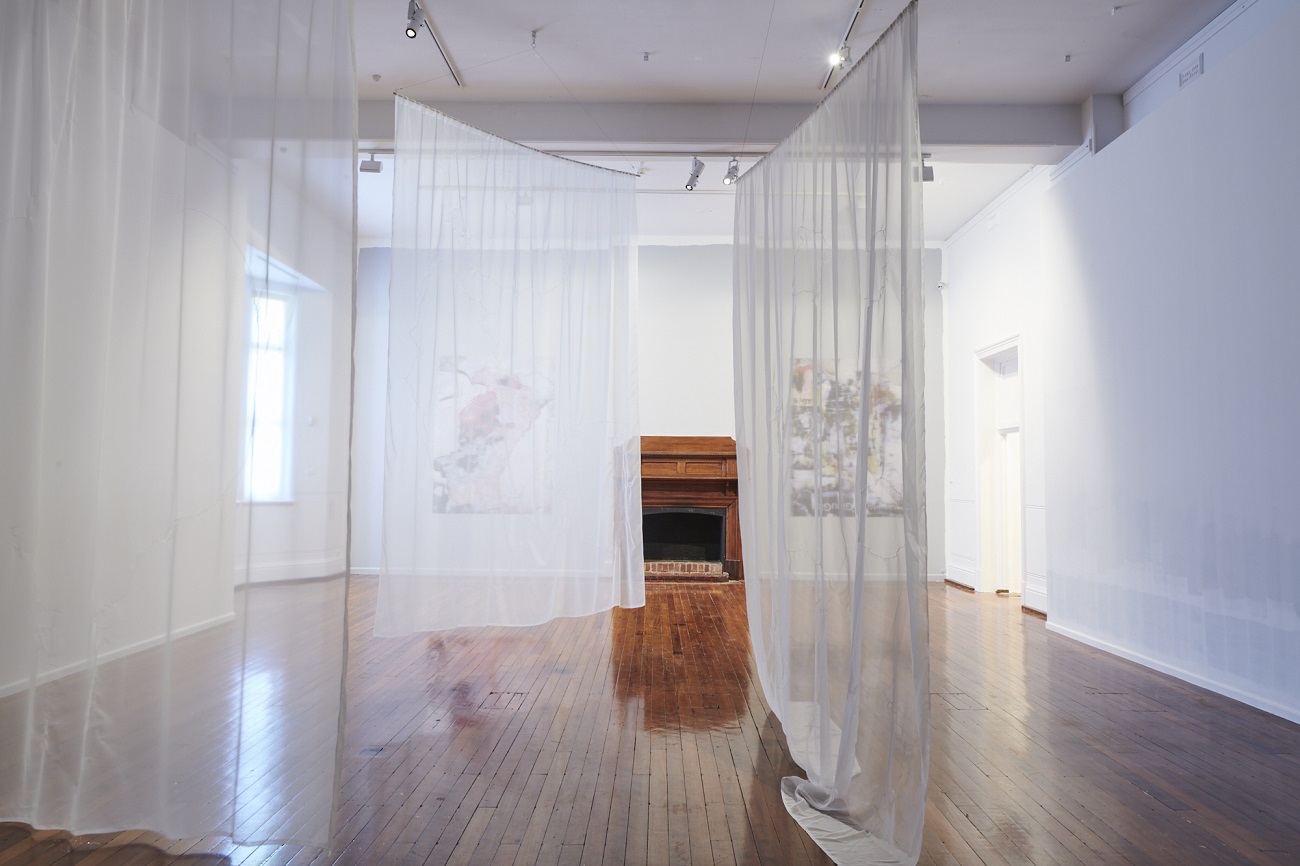
Phoebe Clarke, Prior to, 2021, organza and embroidery thread, dimensions variable. Photography by Rebecca Mansell
Zev Weinstein
When asked how to describe his practice Zev Weinstein responded that, “I take weird photos and spend lots of time splashing around in the ocean.” It’s a modest response considering he studied photography and contemporary art at ECU and is widely considered a skilled photographer.
For A Forest of Hooks and Nails, Zev drew from his family history and personal memories, while responding to the recent Fremantle Arts Centre exhibition Orange: Sannyas in Fremantle (2017). Zev’s parents were connected with the Rajneesh movement in Oregon and Puna.
To create his audio-visual installation Zev photographed family objects including his father’s mala, combining his photographs with found imagery and personal archival material. The mesmerising results fulfil Zev’s wish to create an aesthetic and explore a feeling, rather than make a political judgement.
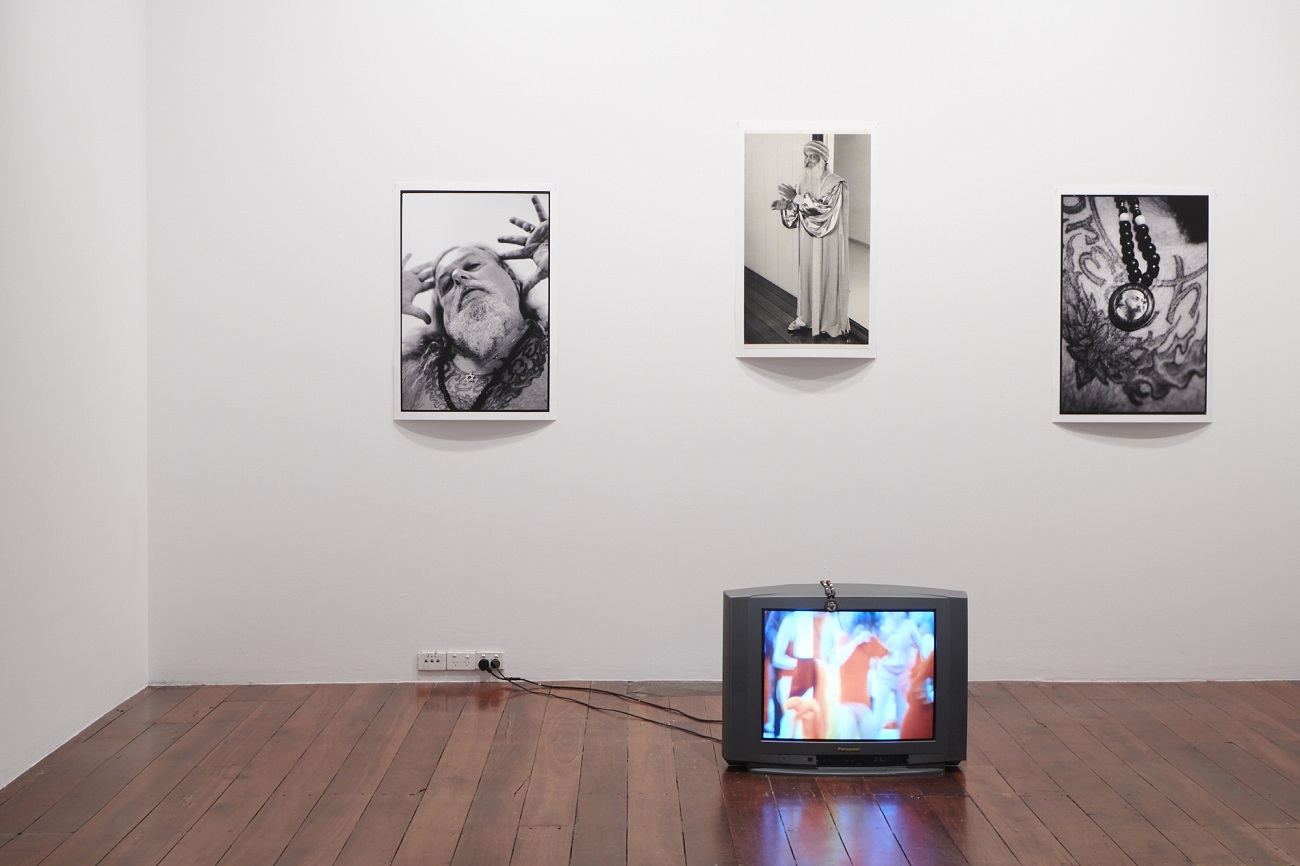
Zev Weinstein, (photographs L-R), Breathe, 2016, 35mm photograph on Hahnemuhle satin rag, 96 x 67cm, edition 1/10. Osho, 2020, found image on Hahnemuhle satin rag, 96 x 59cm, edition 1/10. Mala, 2018, 35mm photograph on Hahnemuhle satin rag, 96 x 67cm, edition 1/10. Zev Weinstein, Ecstatic television, 2021, CRT TV and single channel video, 11 mins 8 secs. Song credit: I can only bliss out (F’days), Laraaji. Photography by Rebecca Mansell
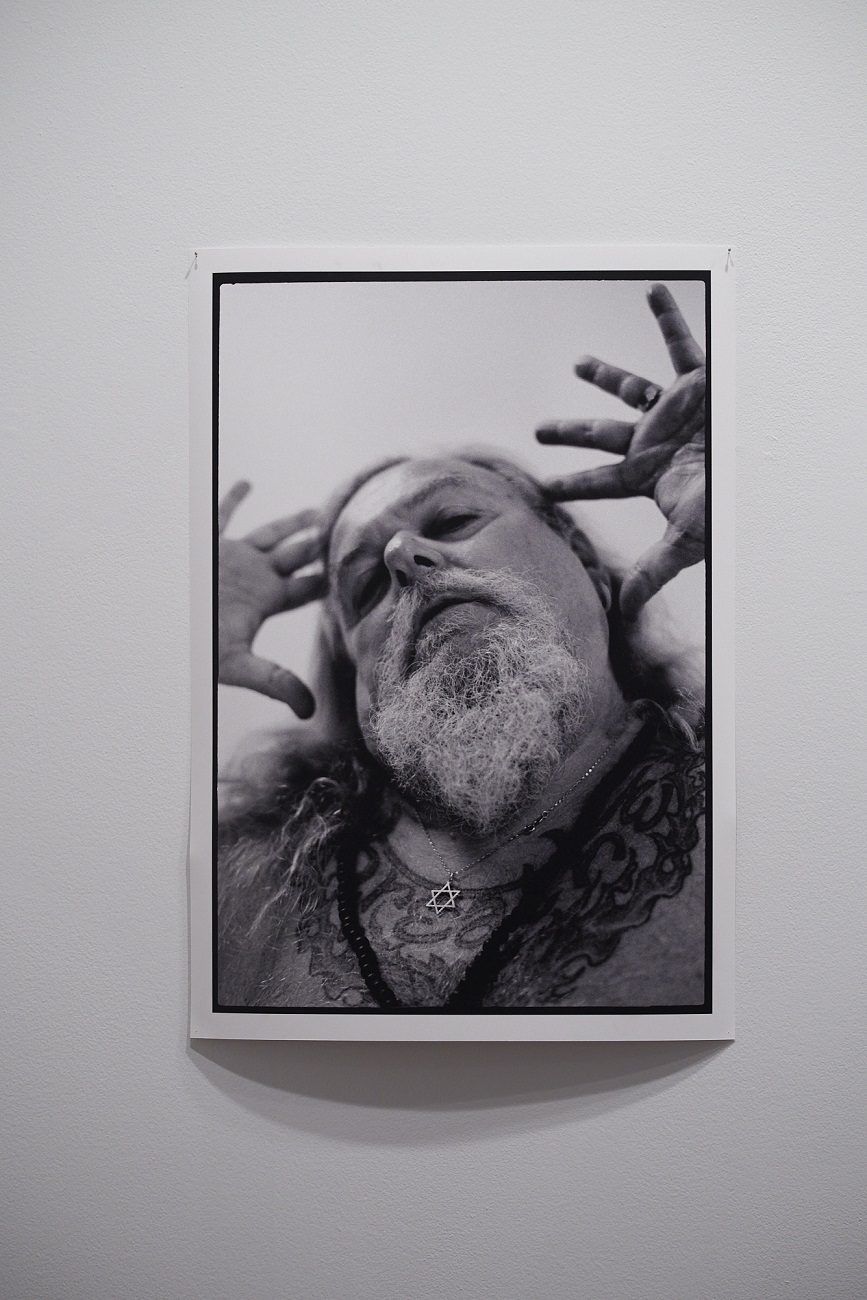
Zev Weinstein, Breathe, 2018, 35mm photograph on Hahemuhle satin rag, 96 x 67cm, ed. 1 of 10. Photography by Rebecca Mansell
Maxxi Minaxi May
Process is very important to Maxxi Minaxi May’s work. The multi-disciplinary artist works with sculpture, mixed-media, printmaking and installation, playing with the relationships between the industrial and the everyday.
Maxxi’s series of small sculptures in A Forest of Hooks and Nails display her trademark playfulness and use of colour.
After brainstorming works that related to install, tools and FAC itself, Maxxi finally settled on the use of rulers. Available in so many shapes and forms, the rulers in these works no longer function as measuring devices but have become tools of form and structure. Colour and pattern were brought to life when lighting was introduced, another vital element of install. The refracting light is almost like a drawing projected onto the walls of the galleries.
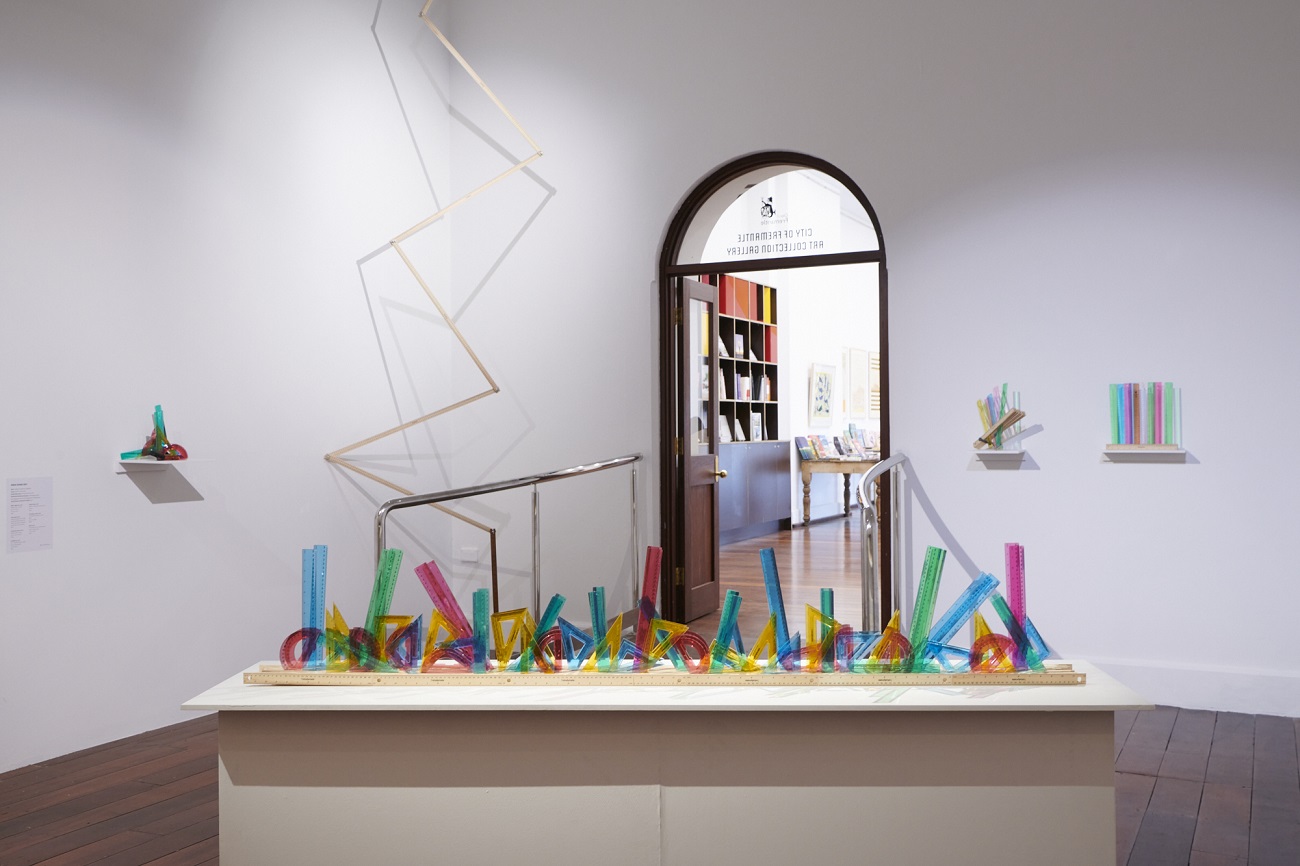
Maxxi Minaxi May, The light crystals, 2021, FSC wood and plastic rulers, glue, 33 x 11 x 198cm. Photography by Rebecca Mansell
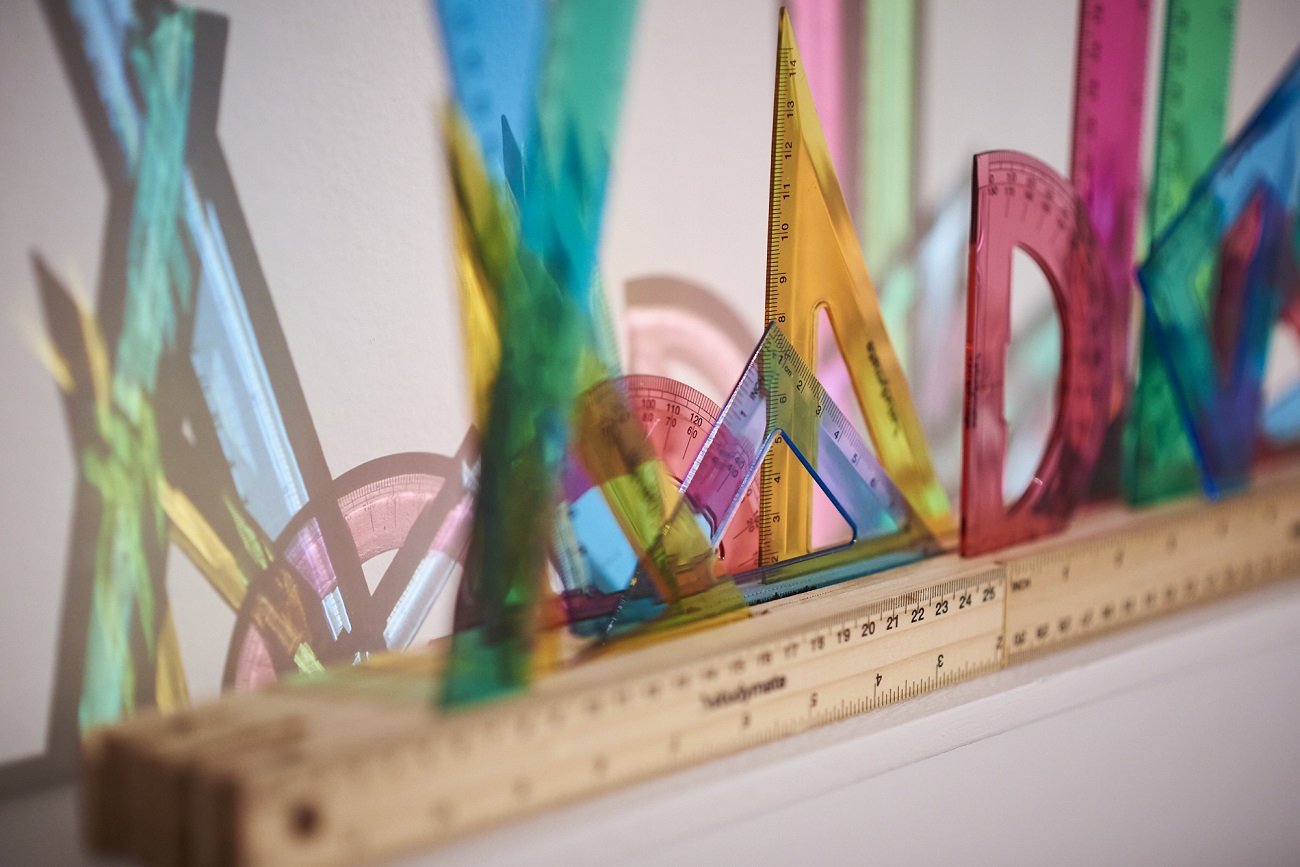
Maxxi Minaxi May, The light crystals (detail), 2021, FSC wood and plastic rulers, glue, 33 x 11 x 198cm. Photography by Rebecca Mansell
Follow the Artists for more!
Follow @phoebe.flynn.clark @zev.weinstein and @maxxi_minaxi_may_artist to see what other projects are coming up for these three!
A Forest of Hooks and Nails closes 5pm Sunday 14 March. Free entry
Top image: Phoebe Clarke, A breath felt, 2021, felt, fire bellow, video with sound, dimensions variable. Photography by Rebecca Mansell
